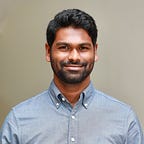Reporting climate injustice — and the challenges in making it engaging
Aditi Rajagopal is an environment reporter at Deutsche Welle Planet A that is passionate about telling stories on climate justice. In an interview with Karthik Muthuswamy, Aditi explains the challenges in creating the stories.
Deutsche Welle, Germany’s international broadcaster, launched the YouTube channel Planet A to answer environmental, conservation, and climate change questions. Planet A looks at “problems from a global perspective and tackles the issues that affect every one of us.” Behind the YouTube channel is an international team of journalists based in Berlin. Their explainer videos explain how the system needs to change — and what each of us can do.
From garden city to the world’s worst city in traffic
In her latest video, Aditi travelled to Banglore — where she is from — to understand how it became the world’s worst city in traffic from being the “garden city” of India. In 2022, India is home to 22 of the 30 most polluted cities in the world, primarily driven by emissions from transportation.
Regarding the inspiration for the story, she said:
“When I‘m in Banglore, I think of traffic. I tried to think about the implications of my stress due to traffic. Then I realised that the impact [of unsustainable transportation on people and environment] is far bigger than the stress.”
Aditi grew up in Bangalore, a fast-growing city comparable to London in size and population and is widely regarded as the Silicon Valley of India. Bangalore has seen a significant rise in traffic with the rising number of cars. Experiencing this every time when Aditi is in Banglore, she set out to tell a story about how a developing country like India is struggling with traffic and pollution.
“In this story, I wanted to show how the aspirations conflict with the sustainable development goals in developing countries.”
While most people don’t own a car in India, a survey showed that 80% of the people would like to own one. The aspiration of a large population to own a car conflicts with the sustainable goal of the country to reduce emissions from vehicles.
“Every story informs me as a reporter, and I learn something personally and professionally. With this one, I always knew that public transport was better. But I learned why and how it’s so much better. For people and the planet.”
Climate injustice
In another story on coal mining in India, she takes us to the Indian coal belt. She meets up with the indigenous communities who are “arguably, facing the direst impact of our dirty coal habit”.
Through her experience as a wildlife researcher in organisations that worked for tribal communities and wildlife conservation, Aditi has developed a passion for telling stories about how the marginalised communities are affected by climate injustice.
Behind the scenes, Aditi faced the challenges of recording the video in “40 degrees of temperature”, crowded environments and intense conditions. She shot the video for this story in just three days.
Most journalists often work on tight deadlines. Before travelling to India, Aditi planned and prepared all the aspects of shooting this story. She had the interviews organised and permissions sorted out. However, she says “your plans can easily fall apart” in a place like India due to unexpected challenges. She stressed the importance of pre-production work which is often longer than the production work.
Bias in climate topics
Aditi challenged herself to report on a story about tidal energy, a topic she believed was reserved for men. She had the belief that male reporters generally cover the topics of energy and engineering.
She “confronted her internal bias” and produced a story that elegantly explained: “why tidal technology is still so far behind other renewables”. The video generated more than two million views — the highest number of views the Planet A channel has ever had.
Aditi received “great feedback from the Youtube community”, which has encouraged her to make another story on the energy topic that she is currently working on.
Women of the wild
Before working for Planet A, Aditi worked as a wildlife filmmaker for a couple of years for programs on Animal Planet, Discovery Channel, and an environmental series called Eco India.
Aditi was the first to be featured on Women of the Wild — India, an Instagram account created by a natural history film-maker Akanksha Sood Singh to showcase “the untold stories of women working for science and nature”.
Like Akanksha, Aditi was also frustrated with the lack of representation of women in Wildlife filmmaking. She hopes that more women will be recognised for their work.
“I now believe we need to engage with more people who may not be as aware, through dialogue, encouragement and empathy, rather than alienating or ‘hating on’ those who aren’t ‘on our side’. And we need to keep the pressure up against those who want to keep the status quo.
“It’s hard, because it may seem like there is very little money and support for environmentalists, especially in developing countries like ours [India], but we have never had as many opportunities as we do now to contribute to the cause in some way. Being a conservationist or by fund-raising, volunteering, or even just amplifying voices on and off social media — Every bit counts.”
